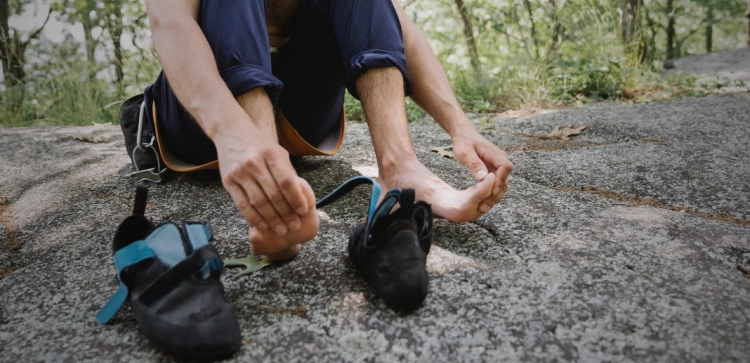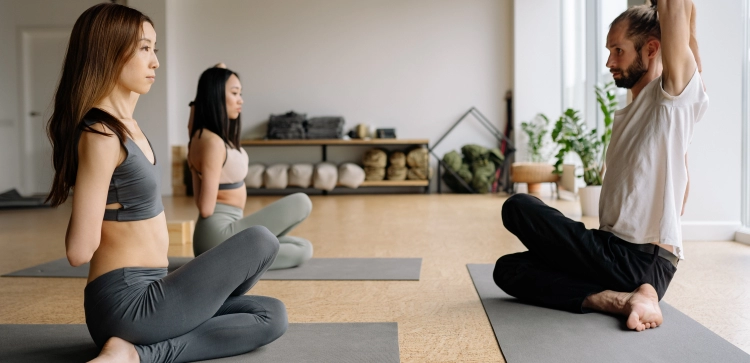Are There Specific Warm-up Routines For Climbing?

When it comes to climbing, whether you're a seasoned rock climber or just starting your journey, the importance of a proper warm-up cannot be overstated. It's not just about preventing injuries; it's about setting the stage for a successful climb. In this article, we'll delve into the key reasons why warming up before climbing is crucial and how it can significantly impact your performance on the wall.
- The Benefits Of A Proper Climbing Warm-Up
- Key Components Of An Effective Warm-Up
- Dynamic Stretching
- Light Aerobic Exercise
- Targeted Mobility Exercises
- Starting With Easier Climbs: Gradual Warm-Up Progression
- Tailoring Your Warm-Up To Your Climbing Style
- Duration And Intensity
- Phase 1: Gentle Start
- Phase 2: Mobility And Dynamic Stretches
- Phase 3: Specific Warm-Up
- Phase 4: Gradual Intensity
- Phase 5: Mental Preparation
- The Mental Aspect: Preparing Your Mind
- Conclusion: Start Strong, Climb Smart
The Benefits of a Proper Climbing Warm-Up
A climbing warm-up serves as a bridge between the sedentary world and the vertical realm you're about to conquer. It's the transition from sipping your coffee to gripping holds, and here's why it's so vital:
-
Increased Blood Flow: When you warm up, your body responds by increasing blood flow to your muscles. This helps deliver much-needed oxygen and nutrients to the areas that will be working hard during your climb.
-
Improved Muscle Elasticity: Warming up gradually loosens your muscles and tendons, making them more pliable. This increased flexibility can significantly reduce the risk of strains and injuries.
-
Enhanced Range of Motion: Climbing often requires you to move your body in various directions and angles. A proper warm-up prepares your joints for these movements, allowing you to reach holds more comfortably.
-
Mental Preparation: Warming up isn't just physical; it's mental, too. It's a chance to focus your mind on the task at hand, visualize your route, and get into the climbing zone.
Key Components of an Effective Warm-Up
Now that we understand why warming up is essential let's break down what an effective warm-up for climbing should include:
Dynamic Stretching
Dynamic stretching involves moving your limbs and joints through a full range of motion. This helps to gradually increase your heart rate, improve blood flow, and activate the muscles you'll be using during your climb. Some dynamic stretches that work well for climbers include leg swings, arm circles, and hip rotations. Remember, the goal is to gently prepare your body, not to push it to its limits.
Light Aerobic Exercise
Engaging in light aerobic activities like jogging in place or jumping jacks can further elevate your heart rate and warm up your body. This step is particularly helpful if you're climbing in a cold environment or after a long period of inactivity. It's like revving the engine before hitting the road.
Targeted Mobility Exercises
Climbing involves a wide range of movements, from delicate balance to powerful reaches. Targeted mobility exercises help improve the flexibility and range of motion in specific muscle groups and joints. For instance, you might perform shoulder circles, wrist rotations, or ankle rolls. These exercises should be climbing-specific, focusing on the areas most stressed during your climbs.
Starting with Easier Climbs: Gradual Warm-Up Progression
As you move to the climbing wall, start with easier routes or boulder problems. This allows you to gradually increase the intensity of your warm-up. Begin with holds and moves that are well within your comfort zone. As you progress, you can tackle more challenging sections. This gradual warm-up progression ensures that your body is fully prepared for the demands of your climbing session.
Incorporating these components into your warm-up routine can make a world of difference in your climbing experience. But warming up isn't a one-size-fits-all endeavor. In the next section, we'll discuss how to tailor your warm-up to your climbing style and specific goals.
Tailoring Your Warm-Up to Your Climbing Style
Climbing is a diverse sport with various styles and disciplines, from bouldering to sport climbing and trad climbing. Each style demands different strengths and techniques. Therefore, it makes sense to customize your warm-up to match your climbing objectives. Here's how you can do it:
Bouldering
Bouldering tends to require short bursts of intense effort. If you're a boulderer, your warm-up should reflect this. Focus on exercises and movements that mimic the types of holds and moves you'll encounter on your boulder problems. Spend more time on powerful and explosive dynamic stretches and exercises. Pay close attention to your fingers, as they'll be doing a lot of work on small holds.
Sport Climbing
Sport climbing often involves longer routes with a mix of endurance and technical challenges. For sport climbers, a balanced warm-up is crucial. Incorporate dynamic stretching for flexibility and aerobic exercises for stamina. You'll also want to pay attention to your core and lower body, as these areas play a significant role in maintaining good body position during climbs.
Trad Climbing
Trad climbing emphasizes gear placement, crack climbing, and long, adventurous routes. Your warm-up for trad climbing should prepare your body for sustained effort and potential awkward positions. Focus on stretches that enhance flexibility and joint mobility. Slow, deliberate movements can help you ease into the unique demands of trad climbing.
Special Considerations
If you're working on specific climbing goals, such as improving your technique or overcoming a particular climbing challenge, your warm-up can be tailored to address these needs. For example, if you're working on balance, incorporate balance exercises into your routine. If finger strength is your focus, include fingerboard hangs as part of your warm-up.
Duration and Intensity
Now that you have a clear understanding of what to include in your warm-up, let's talk about duration and intensity. The key is to start gently and gradually increase the intensity to avoid overexertion and reduce the risk of injury.
Phase 1: Gentle Start
- Begin with a light cardiovascular activity, such as jogging in place or jumping jacks, for about 5 minutes. This raises your heart rate and gets blood flowing to your muscles.
Phase 2: Mobility and Dynamic Stretches
- Spend another 5-10 minutes on mobility exercises and dynamic stretches. Focus on the major muscle groups you'll be using during climbing.
Phase 3: Specific Warm-Up
- Allocate 10-15 minutes to climbing-specific warm-up activities. For boulderers, this might involve climbing easy problems or traversing. Sport climbers can start on easier routes.
Phase 4: Gradual Intensity
- Gradually increase the intensity of your warm-up. For example, in the final 5 minutes, you can attempt slightly harder problems or routes, still well below your maximum climbing ability.
Phase 5: Mental Preparation
- As you near the end of your warm-up, take a few moments to mentally prepare for your climbing session. Visualize your goals and focus on your breathing to stay relaxed and centered.
Remember that these timeframes are approximate, and you should adjust them based on your preferences and needs. The key is to listen to your body and ensure that you feel adequately warmed up before tackling more challenging climbs.
The Mental Aspect: Preparing Your Mind
Climbing isn't just a physical challenge; it's a mental one too. As you cool down physically, take a moment to cool down mentally and prepare your mind for future climbs. Here's how:
Mental Reflection
- Reflect on your climbing session, focusing on the mental aspects. Did you stay calm and focused during challenging climbs? Did you manage fear and anxiety effectively?
Visualization
- Spend a few minutes visualizing successful climbs. Picture yourself confidently tackling routes and overcoming obstacles. Visualization can help build mental resilience.
Goal Setting
- Set clear climbing goals for your next session. These goals can be specific routes, techniques to improve, or mental hurdles to overcome. Having goals adds purpose to your climbing.
Relaxation Techniques
- Practice relaxation techniques like deep breathing or meditation. These can help reduce anxiety and improve concentration.
Conclusion: Start Strong, Climb Smart
A successful climbing session begins with a thoughtful warm-up and ends with a proper cool-down. By following these steps, you not only reduce the risk of injuries but also improve your climbing performance over time. Remember, climbing is a journey, and each session, whether indoors or outdoors, contributes to your growth as a climber. So, start strong, climb smart, and enjoy the vertical world to the fullest.






